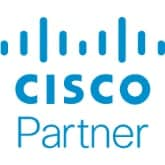June 01, 2022
Advanced Networks: Simple, Secure and High-Performing
Cloud-managed networks improve the user experience and ease IT burdens through visibility, control and automation.
IN THIS ARTICLE
The Network’s New Central Role
The Technology That Powers Modern Networking
Networking Tools in Action
Why Networks Are the Foundation for Success
The link between technology and business resilience is rapidly becoming an inseparable connection between IT capabilities and business survival. Accenture describes the current era as one in which “architecture matters more than ever, and industry competition is a battle between technology stacks.” Not surprisingly, Accenture reports that 77 percent of executives say IT architecture is critical to the success of their organizations.
That dependence is one reason organizations are moving to cloud-managed networks, in-house or through Network as a Service (NaaS) providers. As organizations grapple with hybrid and remote work, they’re also adopting a secure access service edge (SASE) approach, powered by its components, software-defined WAN (SD-WAN) and security service edge (SSE).
These solutions improve network performance and security through real-time troubleshooting, fueled by automation, artificial intelligence (AI) and data analytics. The net effect is a significant reduction in the complexity of network management. That translates to a better experience for users. And, for IT staff, it yields simplification of troubleshooting, provisioning and configuration.
Visibility is another crucial benefit of cloud-managed networks. Traditionally, user complaints are the best indicator of poor network performance. But when employee productivity and customer experience depend on high-quality connectivity, reactive postures and delayed problem-solving are no longer enough. Advanced networks can detect — and often fix — performance issues before anyone realizes they are a problem.
Visibility applies to network security as well. Organizations must know who is connecting to their networks and which devices they are using. IT teams also need the capability, via SD-WAN and SSE, to enforce security policies across the network. Cloud-managed networks further improve security by reducing the likelihood of configuration errors that often lead to performance issues and network outages.
Regardless of organizations’ size or industry, business objectives and opportunities depend on a strong networking foundation: secure, high-performing and easy to manage. A growing number of organizations are finding that agility and performance in cloud-managed networks and NaaS.
Agility: Cloud network management lets organizations expand as needed. Pay-as-you-go licensing, dashboard management and zero-touch provisioning make connecting new employees and branches seamless.

Experience: Cloud-managed networks detect performance issues automatically and facilitate real-time resolution, whether through self-healing capabilities or remote management by IT staff.
Security: Distributed networks should look to SSE, zero-trust network access and automated tools to enforce consistent security policies. Artificial intelligence for IT operations (AIOps) minimizes risk by helping to detect and resolve issues quickly.
The Network’s New Central Role
Network management has become more complex and more critical to business outcomes. Additional complications arise from ongoing hybrid work and significant increases in network traffic for virtually all enterprises. As organizations contend with these challenges and pursue digital transformation, they require secure, scalable and reliable networks to stay competitive.
REMOTE PRODUCTIVITY
Remote work accelerated the cloud adoption that was underway before the pandemic, a shift that created new challenges for networking and security. Networks have aged, but employees’ devices are newer, and, post-pandemic, their day-to-day workflows rely more on cloud-based applications. Reliable connectivity is crucial for productivity in remote and hybrid environments.
FOCUS ON CYBERSECURITY
Hybrid work forces organizations to rethink network security — a primary reason that cloud management is poised to grow. Cloud-based networks offer visibility and robust control to enforce desired security policies consistently and quickly. SSE helps secure remote access, while firewalls offer capabilities such as segmentation, traffic control and deep packet inspection.
ZERO-TOUCH PROVISIONING
As organizations expand remote work sites, zero-touch network provisioning is a valuable capability. They can send wireless access points to remote sites, where users can plug them in to use right away. Organizations no longer need to send technicians, and automated tools help branches and users establish service quickly.
NEXT-GENERATION WI-FI
Wi-Fi 6, 6E and 7 are designed to handle high levels of demand for device connectivity. Getting there, however, typically requires a substantial network upgrade. The payoff is the ability to support users who bring multiple devices into workspaces and to leverage Internet of Things (IoT) solutions such as smart lighting and environmental systems.
IT SKILL DEVELOPMENT
Many organizations find it easier to train current IT staff members to manage cloud-based networks rather than hire employees with those skills. Investments in training ensure that IT teams can fully leverage the performance and security features of advanced networking — which frees them up to focus on other tasks.
Learn how to adapt your network to meet new demands and leverage new opportunities.
Networks and Security Are Post-Pandemic Priorities
88%
The percentage of enterprise organizations that are more focused on secure remote connectivity due to the COVID-19 pandemic1
85%
The percentage of organizations with mostly remote staffs that had security breaches in the past year, versus 65 percent of organizations with mostly onsite staffs2
40%
The percentage of enterprises that will adopt software-defined WAN and cloud-delivered secure web gateway solutions from the same vendor by 2025, up from less than 5 percent in 20213
$15 billion
The projected size of the global cloud-managed networking market by 2027, about $3 billion in 20194
89%
The percentage of executives who say the limitations and opportunities of IT architecture will increasingly determine their organizations’ ability to generate value5
Sources: 1Futuriom, "SD-WAN Managed Services Survey," January 2021; 2Barracuda, "Report: The State of Network Security in 2021," September 2021; 3gartner.com, "Predicts 2022: Connecting the Digital Enterprise," Dec. 2, 2021; 4Fortune Business Insights, "Cloud-Managed Networking Market Size, Share and COVID-19 Impact Analysis … and Regional Forecast 2020–2027," November 2020; 5Accenture, "Technology Vision 2021: Leaders Wanted," August 2021
The Technology That Powers Modern Networking
Networking advances are happening across the board: progression of the Wi-Fi 6 and 6E standards and releases of compatible hardware; software capabilities through the cloud, SD-WAN, AI and automation; and stronger security via SSE and cloud-enabled control and visibility. Today’s network is a complex, business-critical foundation — even a prerequisite — for many of the other goals that allow organizations to grow and compete.
Two of the most significant shifts are the adoption of cloud-managed networks and the use of NaaS. Moving network management to the cloud increases visibility, performance and security while simplifying management — the attributes organizations need to support remote work. Switches, routers and access points connect to the cloud, and IT staff monitor and manage via a dashboard. With zero-touch provisioning, cloud-based networks make it easy and cost-effective to add new users and locations.
Some organizations are eliminating the work of network management entirely by engaging service providers to handle those duties through the cloud. NaaS ensures high-quality connectivity while freeing up internal resources for other initiatives.
As networking technologies get smarter, IT professionals can focus more attention on projects that add significant business value and less on routine tasks.
The Benefits of Cloud
Cloud-managed networking is cost-effective and quick to scale, offering the same predictable spending advantages as other cloud-based solutions. Organizations can obtain best-in-class quality and reliability without a sizable investment in hardware. As business strategies shift and workforces change, cloud-based networks can be agile and flexible. With cost, need and performance aligned, organizations pay for only what they need.
Back to Business
Cloud-managed networks and NaaS make it easier to focus on core business activities rather than IT hardware operation. This can be an opportunity to reduce or eliminate resource-intensive work, such as data center management. Organizations can improve their redundancy and failover capabilities and enhance business continuity without having to sustain secondary sites or maintain associated IT resources.
A Better Way to Troubleshoot
Data analytics and AI move organizations from a reactive to proactive footing with regard to network management: examining what’s happening on the network and highlighting appropriate solutions, whether a self-healing fix or guidance for human intervention. Advanced networking capabilities — including automation and AIOps — reduce IT overhead and speed up troubleshooting, leading to a better experience for users.
Securing Remote Access
SASE combines SD-WAN and SSE to enhance performance and security as remote users access applications. In the past, IT teams had to predefine every data path, but SD-WAN enables the network to decide, reducing complexity and simplifying management. In one survey, 91 percent of network and IT managers said SD-WAN is becoming a larger part of their network connectivity strategies.
Wi-Fi 6 and 6E Advantages
Wi-Fi 6 and 6E are built for multiple devices, with 6E offering the same functionality in the 6-gigahertz range. Wi-Fi 6E routers, switches and access points are on the market, and adoption is expected to continue for several years. Wi-Fi 6 and 6E are backward-compatible, so organizations can continue to operate existing wireless devices while planning for future upgrades.
Wi-Fi 6 and OFMDA
Wi-Fi 6 is distinctive because it was designed for increased demand for connectivity. The most critical feature of Wi-Fi 6 is likely to be orthogonal frequency-division multiplexing access. OFMDA slices the existing channel into smaller resource units, allowing multiple clients to communicate with a single access point simultaneously. This yields greater efficiency and higher throughput.
Less Power, Longer Battery Life
Wi-Fi 6 offers multiuser, multiple-input, multiple-output (MuMIMO) technology, which lets concurrent users access Wi-Fi 6 and 6E networks in both uplink and downlink scenarios, so the network can talk to more users at once. Wi-Fi 6 also has targeted wait time (TWT), which reduces power consumption and conserves battery life by letting clients go to sleep when not in use.
5G Networks and CBRS
Mobile workforces have increased the demand for 5G networks. While Wi-Fi 6 and 5G are complementary, Wi-Fi 6 is useful for indoors and 5G is helpful for mobile network connectivity. The Citizens Broadband Radio Service is also emerging as an essential conduit to connectivity, particularly in rural areas.
Learn about the best networking solutions to improve performance, increase efficiency and strengthen security.
Get into the NetOps 2.0 Mindset
Gartner coined the term “NetOps 2.0” to encapsulate an approach to networking that prioritizes agility, automation, proactivity and risk management. NetOps 2.0 isn’t a tool but rather a mindset. Organizations and IT professionals that embrace NetOps 2.0 are moving away from the old models: incremental improvement; risk avoidance; and overreliance on reactive, manual processes.
Here’s what they’re adopting instead.
AGILITY: NetOps 2.0 uses automation and analytics to build self-monitoring, self-diagnosing and self-healing networks. Systems aggregate data to speed up troubleshooting, while AI guides engineers toward the most likely solutions.
AUTOMATION: Manual operations should be the exception, not the rule. Automation, AI and application programming interfaces (rather than command-line interfaces) simplify network maintenance and reduce human errors that cause network outages.
RISK MANAGEMENT: Risk avoidance often leads to incremental improvements that yield modest, short-term benefits. Managing risk, instead, enables organizations to pursue strategic changes with significant benefits and lasting outcomes.
PROACTIVE INNOVATION: NetOps 2.0 builds a better network, which frees IT staff to pursue other improvements and innovations. The old mindset of “That’s how we’ve always done it” no longer applies.

Retail and Education
Retail centers, education campuses and similar locations require seamless connectivity. Consumers expect digital-first, personalized experiences. To meet that demand, 60 percent of retailers increased their IT budgets in 2021, and nearly 37 percent improved network and systems security, according to Retail Info Systems. At the same time, Splunk reports that insufficient cybersecurity staff is a top challenge for 33 percent of retailers.
In education, students expect a high-quality wireless experience for learning and digital services outside of class. Colleges also need robust networking, particularly Wi-Fi 6 and 6E, to leverage next-generation tools such as augmented and virtual reality. Cloud-managed networks, SASE and similar solutions help retailers and campuses stay competitive while simplifying network management and automating critical cybersecurity functions.

IoT and Physical Security
Opportunities and challenges will accompany the IoT expansion spurred by Wi-Fi 6 and 6E. Efficient, high-bandwidth networks support more connected devices, which increases risk. Organizations that want to leverage that greater capacity will need visibility to know what’s on their networks, and automation and AIOps to streamline management and monitoring. With these tools in place, organizations can incorporate networked sensors and Power over Ethernet to monitor the radio-frequency environment and make sure wireless users have the best experience.
The ability to support and secure additional devices expands the capacity to deploy physical security tools such as networked cameras in retail stores, warehouses and smart cities. Such cameras also yield data that can drive better decision-making about staffing, product placement, city services and other use cases.

Advanced Networking Services
Organizations may need help aligning networks with environments and business objectives. CDW solution architects can help through:
- Wireless site surveys to determine access point placement, particularly for Wi-Fi 6 and 6E
- SD-WAN advisory workshops to discover which solution is the best fit for your organization and pros, cons and use cases for specific solutions
- SASE workshops to evaluate network access and security needs
- Managed services for cloud-managed networking
Story by
Sven Rasmussen, an enterprise networking team lead at CDW. He focuses on wireless networking strategy for education and healthcare, as well as for large public venues and professional services.
Aaron Pratt
Request to speak with a networking expert today. Call 800.800.4239

Sven Rasmussen
CDW Expert

Aaron Pratt
CDW Expert





